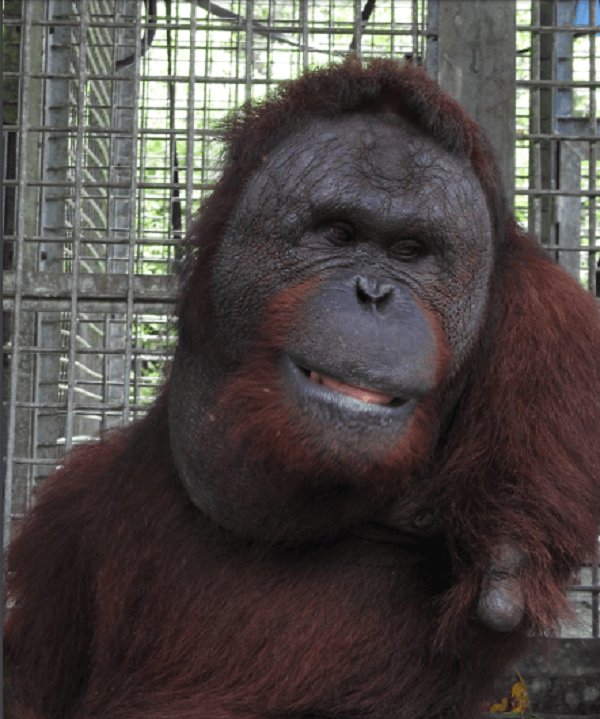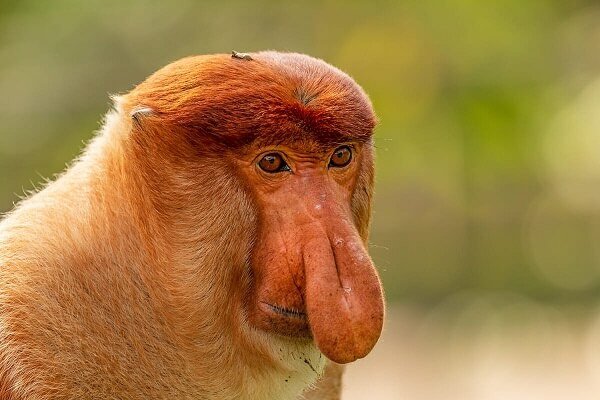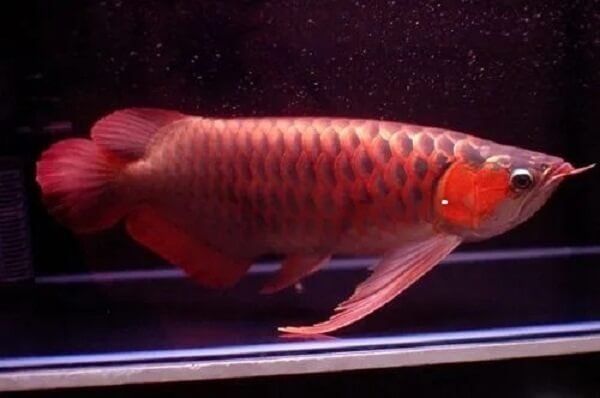While the world’s attention about Kalimantan’s animals is focused on orangutans, the eastern part of Borneo island is populated with a wide array of animals. The sad part about it is that most of them are endangered because of human activity, with deforestation for the purpose of palm oil plantation being the main cause.
To learn is to protect, we say. At least, to know is to assist in spreading the knowledge that a lot of wildlife is suffering our endless appetite for consumer goods products
Orangutans
The Bornean orangutan (Pongo pygmaeus) is a highly intelligent primate that is native to the island of Borneo. It exhibits advanced tool making skills and well-established cultural patterns in the wild. The Orangutan is the most iconic animal of Borneo, but sadly also the most threatened. Indeed, they are critically endangered in Borneo, mostly due to habitat conversion to oil palm plantations. The best place to see Orangutan in Borneo is the Kinabatangan river and Deramakot Forest Reserve.
Proboscis monkey
Please don’t laugh at him. Despite being one of the oddest looking animals, the Proboscis monkeys are also endangered due to the loss of habitat. But we have to admit that they look quite comical because of their oversized noses.
Pig-tailed macaques
Pig-tailed macaques are very small primates found in South-east Asia, South-west China, North-eastern India and, of course Borneo and other Indonesian islands. These macaques are characterised by their short tail that is carried half-erect and somewhat resembles a pig's, hence its common name.
Sun Bear
Sun bears are also known as honey bears because of their love of honey. Sun Bear (Helarctos malayanus) is a type of bear that lives in tropical rainforests, Southeast Asia. In Indonesia, the distribution of the Sun Bear is found on the islands of Kalimantan and Sumatra. Sun Bears are solitary animals and are rarely found in groups.
Arowana Fish
Native to Southeast Asia, Asian arowanas inhabit blackwater rivers, slow-moving waters flowing through forested swamps and wetlands. Adults feed on other fish, while juveniles feed on insects.The red arowana fish is the king of ornamental fish, which makes it fairly expensive. This fish is a type of freshwater fish that comes from the family Osteoglossidae and is known as bonytongues (the last name is now often used for h from the Arapaimidae family).
Hornbill Birds
East Kalimantan is home to exotic hornbills, known locally as enggang or julang, belonging to the Bucerotidae bird family. The scientific term ‘buceros’, referring to the shape of this bird’s bill, means ‘cow horn’ in Greek. Indeed, the easiest way to identify afis hornbill is by its large, brightly-coloured and distinctively-shaped bill
Mouse Deer
The kancil kancil [also known as the “mouse deer”, is a small-bodied, even-spotted ungulate member of the tribe Tragulidae. Animals that spread in Southeast Asia to Sumatra and Kalimantan , this is one of the smallest species in the world . The upper body is reddish brown, the middle of the nape is usually darker than the rest of the body. The underparts are white with a slightly brownish border in the middle, distinctive markings on the esophagus and the upper chest are dark brown. His face was white, it looked like a line from chin to chest.Learn about 7 animals living in Kalimantan
If you wish to assist any organisation doing great conservation work in Kalimantan, we suggest to donate to FNPF, our CSR partner .
Green & Hawksbill turtles
There are six species of sea turtles found in Indonesian waters, including the green turtle (Chelonia mydas) and hawksbill turtle (Eretmochelys imbricate). Despite being protected by law, in many cities in Kalimantan, the illegal trade of sea turtle eggs still occurs. Furthermore, the turtle eggs are also smuggled from Kalimantan to Malaysia.








